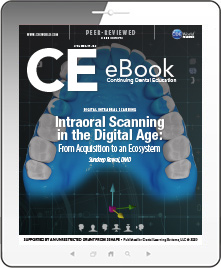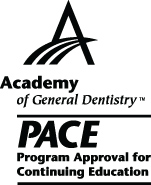CDEWorld > eBooks > Intraoral Scanning in the Digital Age: From Acquisition to an Ecosystem


ADA CERP is a service of the American Dental Association to assist dental professionals in identifying quality providers of continuing dental education. ADA CERP does not approve or endorse individual courses or instructors, nor does it imply acceptance of credit house by boards of dentistry. Concerns or complaints about a CE provider may be directed to the provider or to ADA CERP at www.ada.org/cerp/

Approved PACE Program Provider. FAGD/MAGD credit. Approval does not imply acceptance by a state or provincial board of dentistry, or AGD endorsement. 1/1/2023 to 12/31/2028. ID # 209722.
eBook
Released: Thursday, April 30, 2020
Expires: Sunday, April 30, 2023
Intraoral Scanning in the Digital Age: From Acquisition to an Ecosystem
By Sundeep Rawal, DMD
Commercial Supporter: 3Shape
The delivery of scientifically proven restorative dentistry and implant prosthodontics has been significantly advanced by the rapid introduction of innovative digital technologies into clinical practice. Intraoral scanning is one of these technologies that has significantly increased the exactness of measurement for the digital planning of cases and, therefore, has streamlined both the gathering of diagnostics and the predictability of results. This article will focus on the benefits of incorporating intraoral scanning in the treatment of complex full-arch restorations for both natural tooth and implant dentistry to increase efficiencies, reduce clinical appointments, and decrease treatment costs to enhance patient care.
LEARNING OBJECTIVES:
- Discuss the benefits of using intraoral scanning for diagnosis and design of full-arch restorations.
- Determine relevant clinical protocols to combine intraoral scanning with traditional techniques to streamline therapy.
- Determine key facets of taking digitally planned data and creating physical restorations to execute therapy in ways that allow for greater efficiencies and time and cost savings.
About the Author
Sundeep Rawal, DMD
Senior Vice President, Implant Support at Aspen Dental
Private Practice Specializing in Prosthodontics
Cofounder, Digital Dentistry Institute


